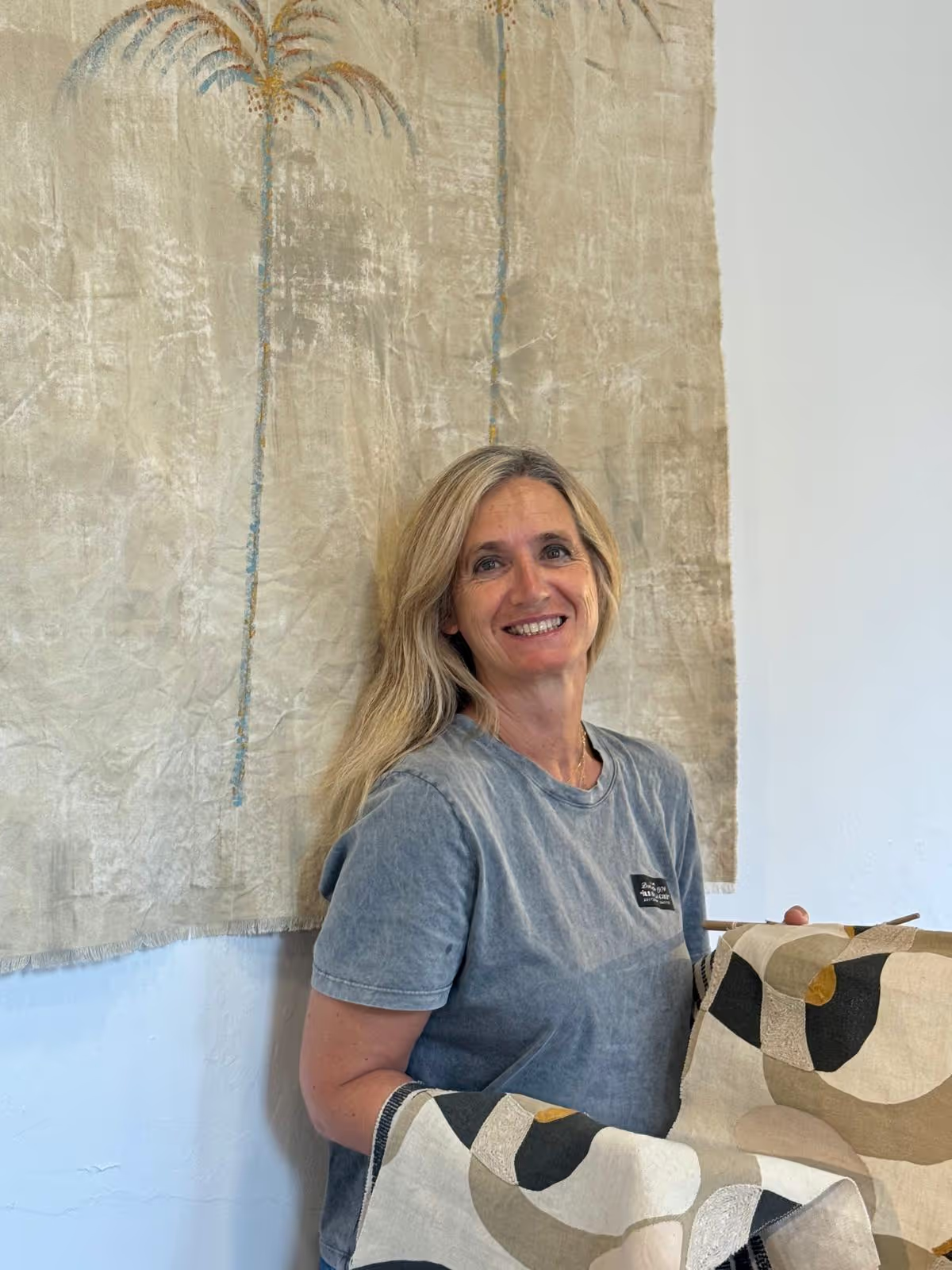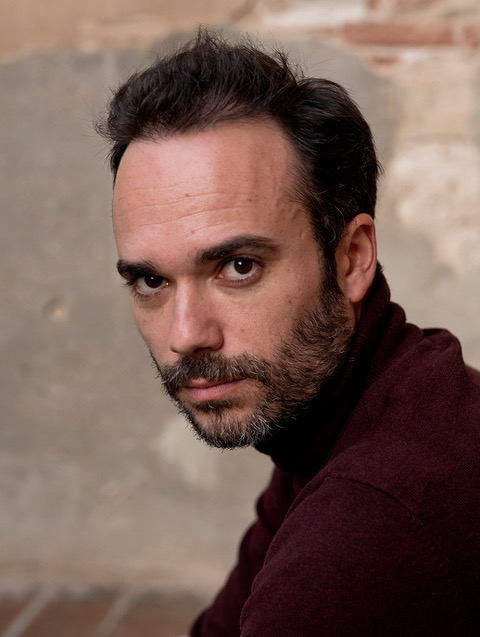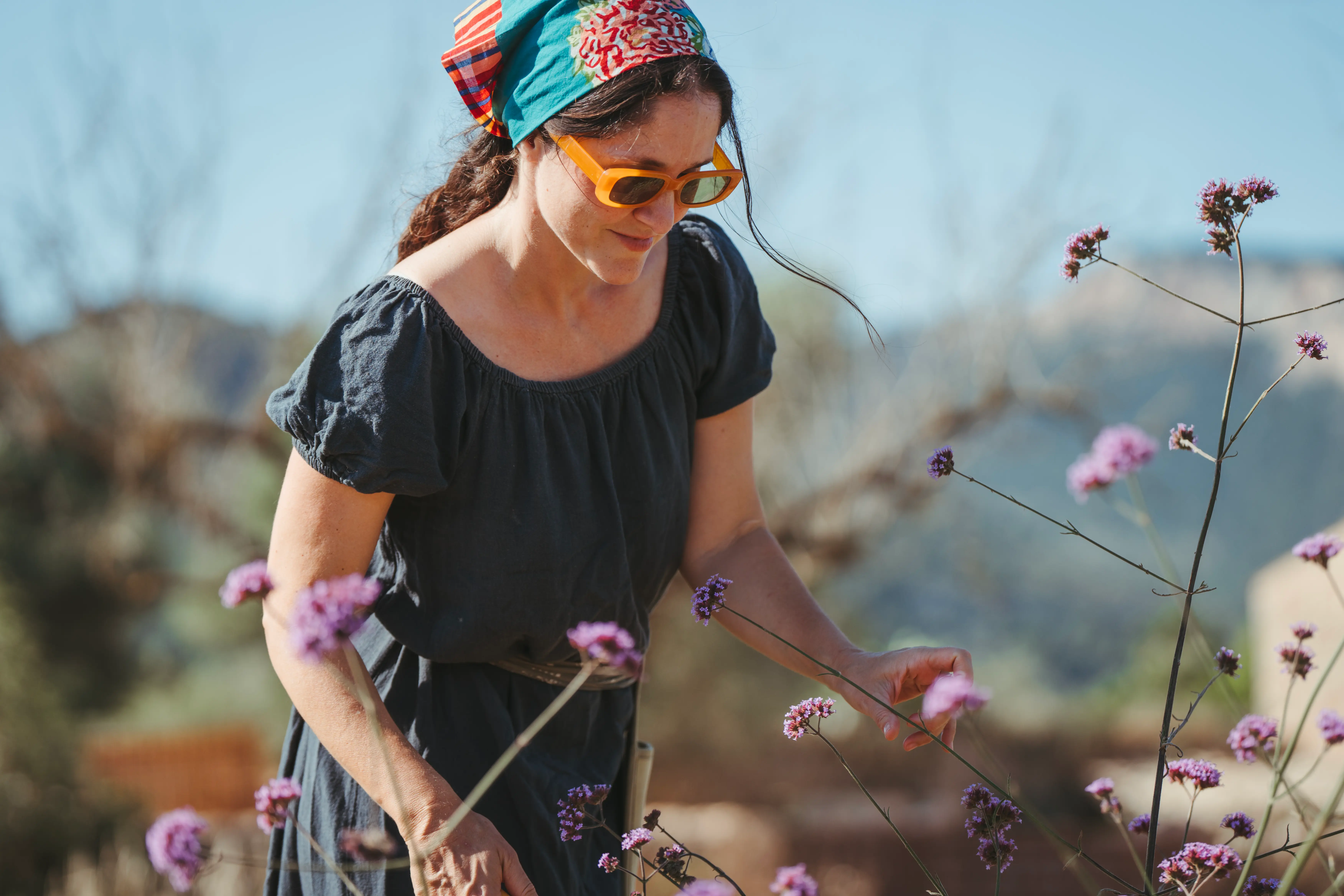
Als ich mein drittes Kind, Leni, bekam, erhielt ich Blumen von Freunden im Ausland. Sie hatten Mühe, einen Floristen zu finden, der etwas Nachhaltiges und Zeitgemäßes anbieten konnte. Diese Erfahrung hat meine Neugier geweckt. Bald darauf fing ich an, selbst zu recherchieren, wie man Blumen züchtet, und nahm ein Angebot meiner Freundin Larissa von Solu Farm an, mit dem Pflanzen auf ihrer Finca zu experimentieren. Das war der Anfang von Serra Flowers.
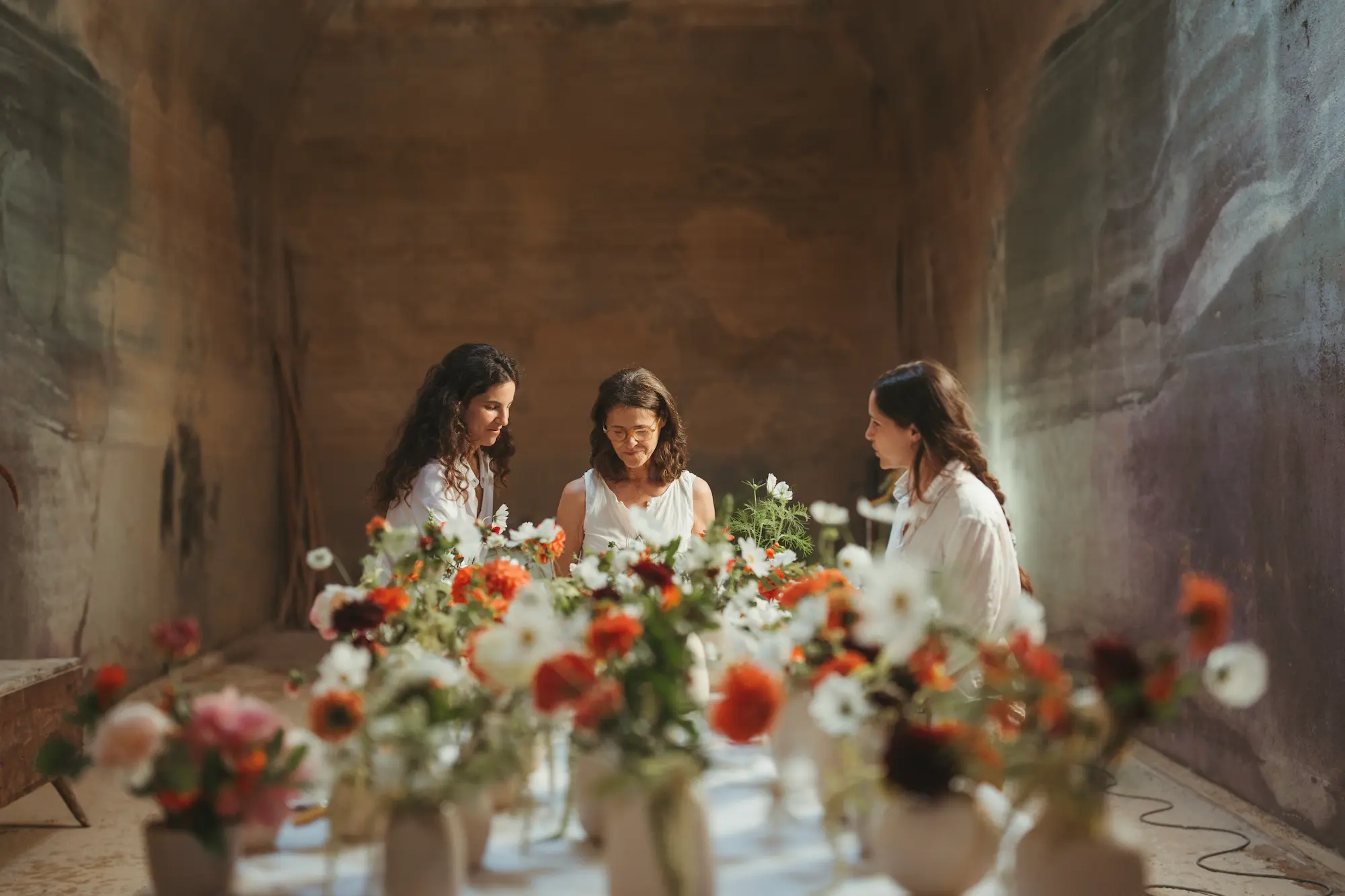
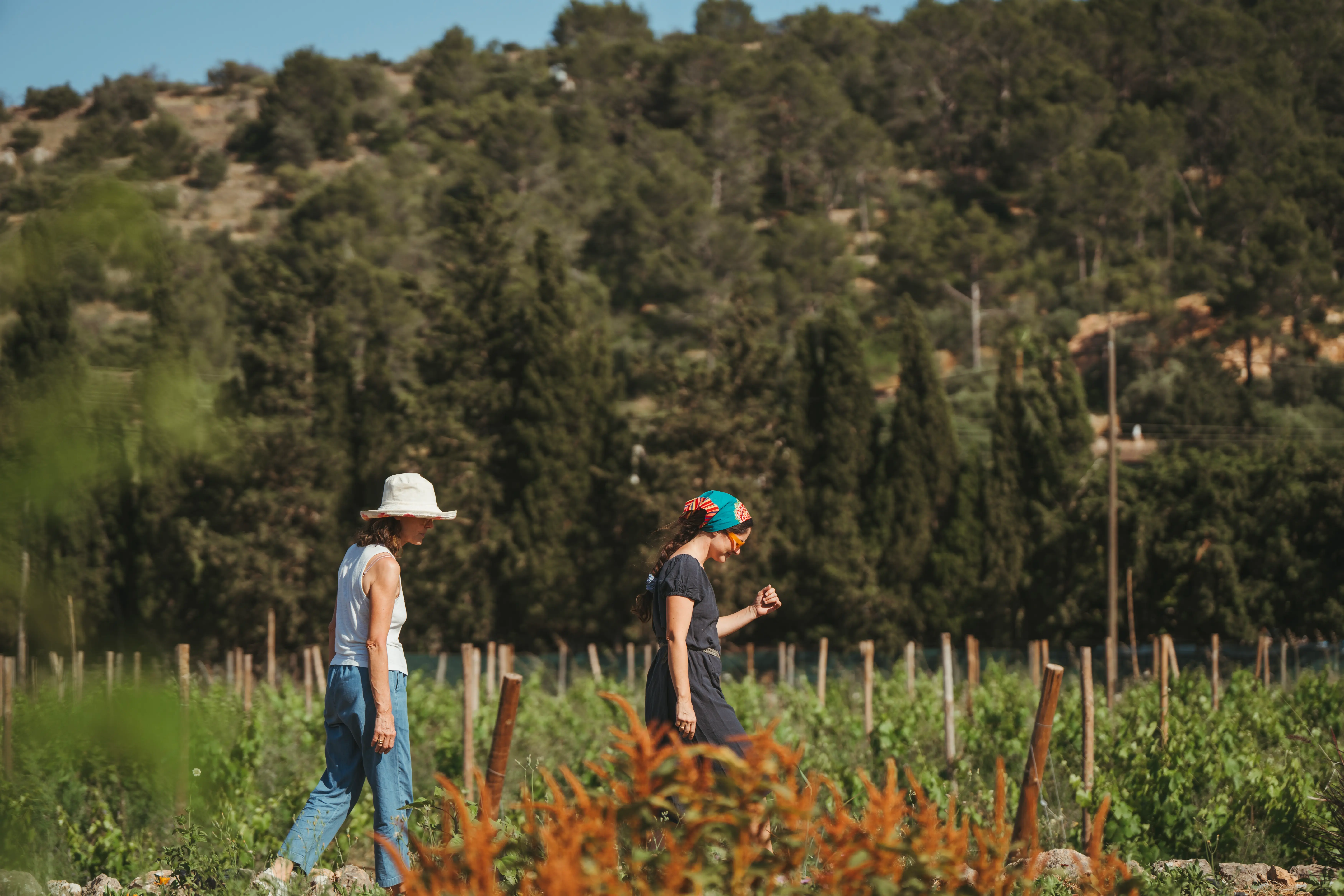
Meine Mutter lebt in Madrid, verbringt aber lange Zeit auf Mallorca. Sie trägt hauptsächlich zum Blumengarten und zur Gestaltung bei, während ich mich mehr auf Kundenbeziehungen, Präsentationen, Budgets und Design konzentriere. Wir sind sehr eng miteinander verbunden, kommunizieren ständig und tauschen ständig Ideen über unsere Arbeit aus.
Durch die Lage in den Bergen ist das Klima immer etwas kühler als auf dem Rest der Insel, was den Blumen zugute kommt. Ich persönlich liebe es, die Alaró-Berge als Hintergrund für meine tägliche Arbeit zu haben, das ist wirklich inspirierend.
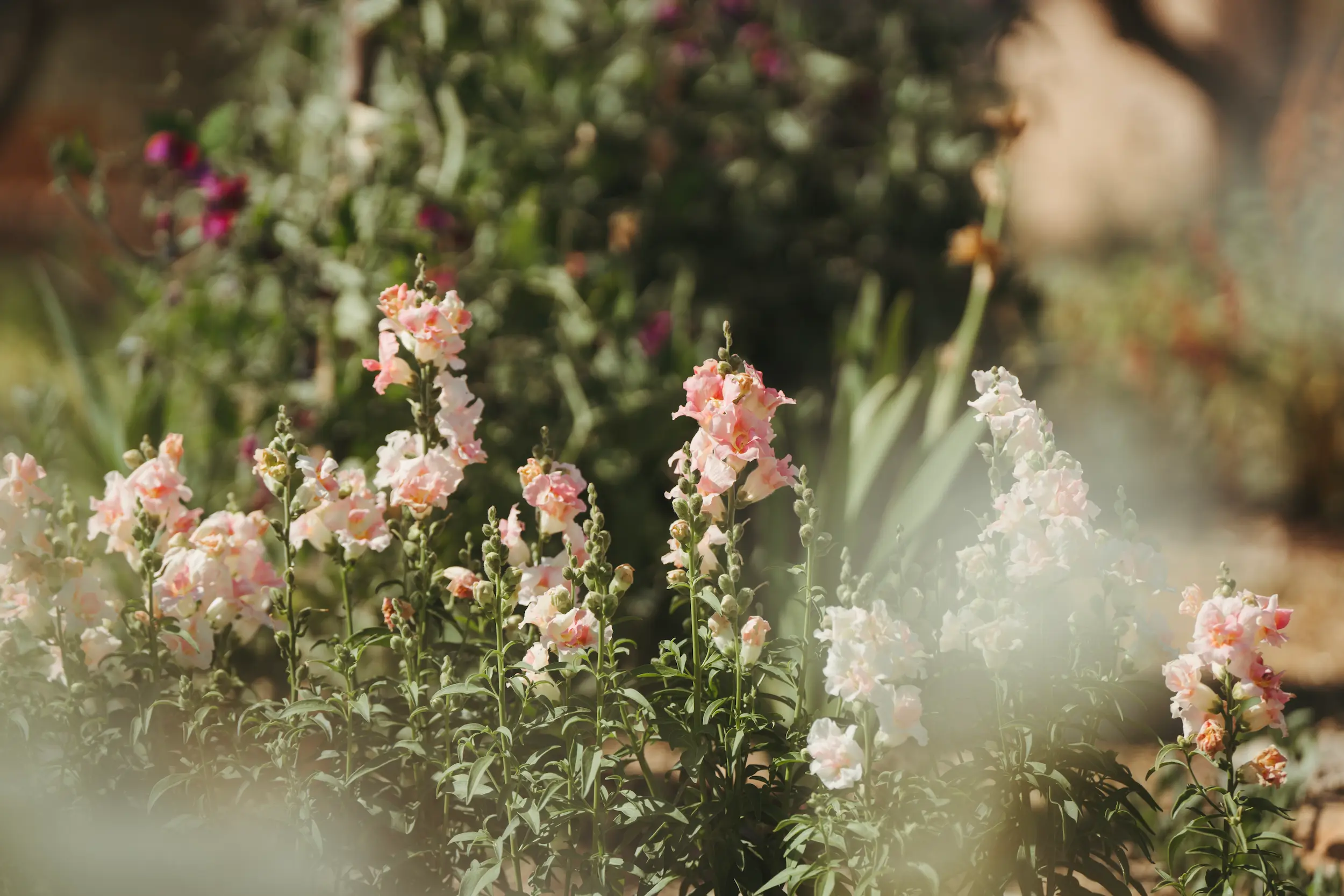
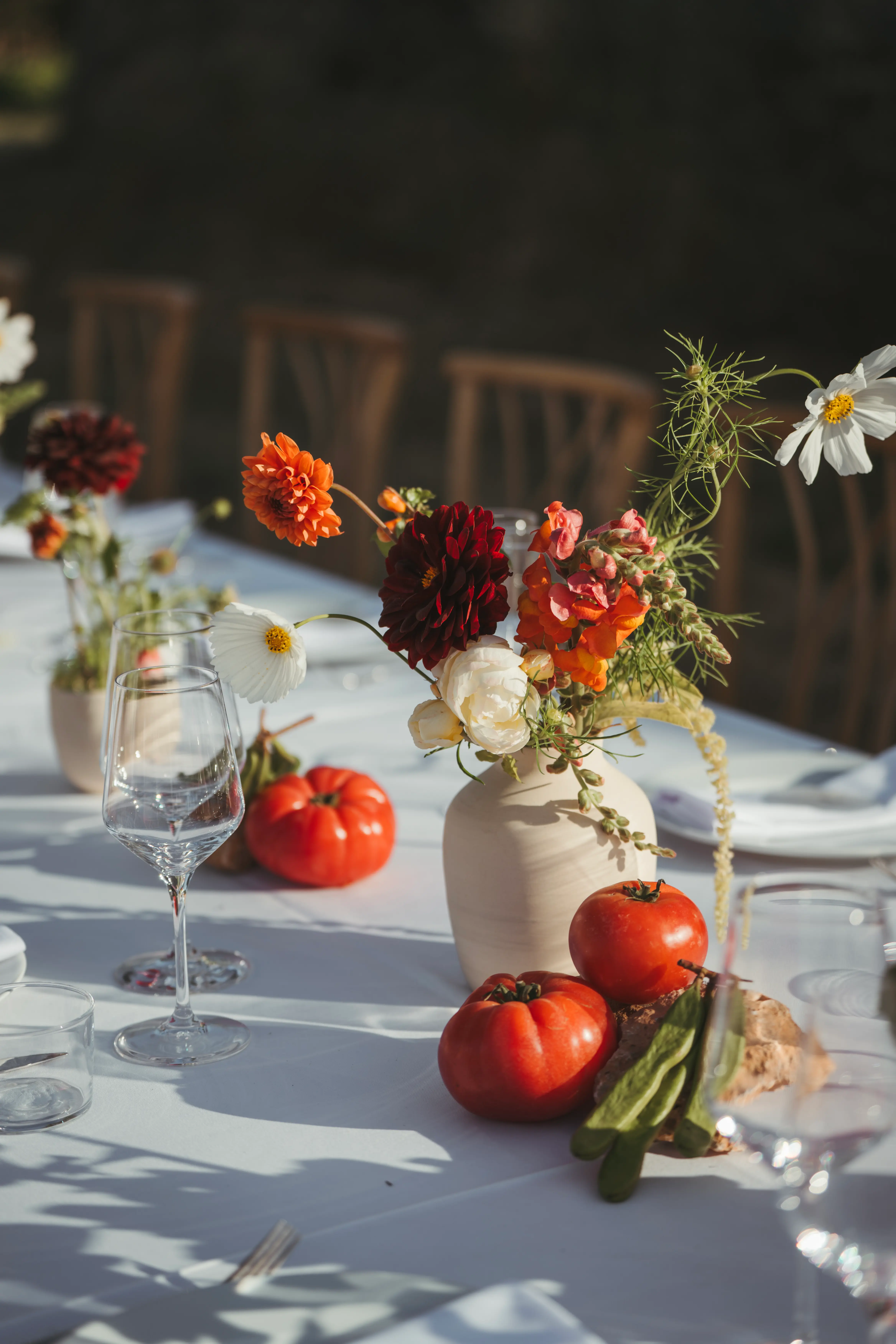
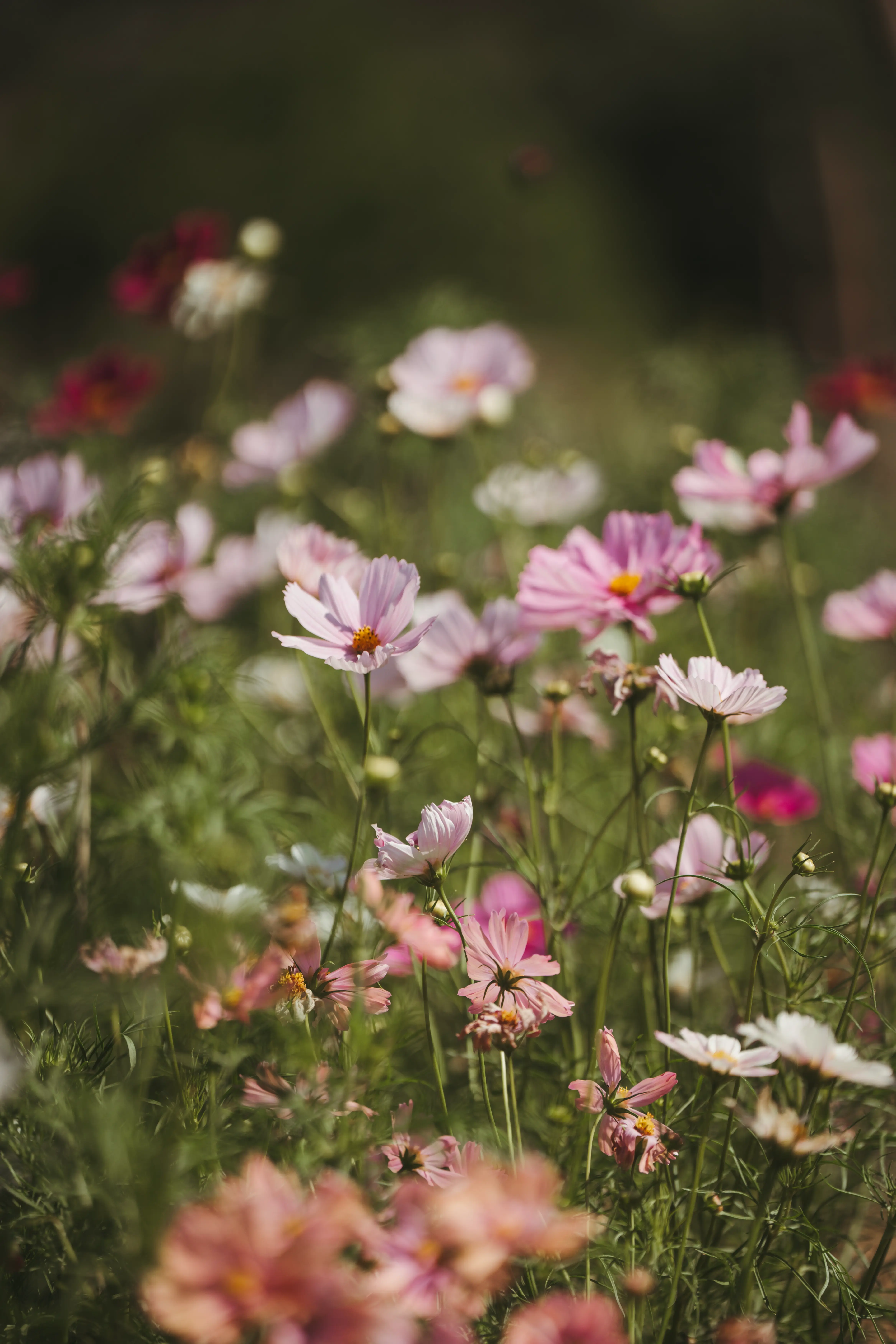
Beim Design von Strickwaren dreht sich alles um Farbe, Textur und Form — und ich kann mir keine bessere Karriere vorstellen, als ich Floristin wurde. Es hat mir ein instinktives Verständnis von Komposition und Lagenbildung vermittelt, was sich jetzt in meinen floralen Designs widerspiegelt.
Leider gibt es in Lebensmitteln und Kosmetika ein echtes Bewusstsein für Nachhaltigkeit, in der Blumenindustrie jedoch fast keines. Die meisten Blumen, die im Handel erhältlich sind, sind so stark mit Chemikalien behandelt, dass Sie Handschuhe tragen möchten, um sie anzufassen und sie auf keinen Fall in die Nähe Ihres Gesichts zu bringen. Für mich bedeutet Nachhaltigkeit in der Floristik, verantwortungsbewusst zu wachsen, schädliche Pestizide zu vermeiden und den Menschen zu zeigen, dass Blumen sowohl sicher als auch schön sein können, ohne die Natur zu gefährden.
Der Designprozess beginnt Monate im Voraus, wenn Sie Ihre Samen auswählen. Von Anfang an denken Sie bereits über Farben, Jahreszeiten und Trends nach. Lokal angebaute Blumen haben mehr Leben und Charakter — sie bewegen sich, sie biegen sich, sie fühlen sich lebendig an. Im Gegensatz dazu sehen Blumen, die im Katalog bestellt wurden, alle gleich aus und werden oft stark mit Pestiziden behandelt. Wenn ich bei größeren Veranstaltungen mehr Blüten benötige, wende ich mich zuerst an andere lokale Züchter und dann an Züchter auf der Halbinsel, die meine nachhaltigen Praktiken teilen. Nur wenn es nötig ist, importiere ich, und dann versuche ich, es in Europa zu halten.
Juli und August sind die schwierigsten Monate. Einige Pflanzen geraten in einen Schockzustand und stellen die Produktion ein. Zum Glück erholen sich viele im September wieder, fast so, als ob es ein zweiter Frühling wäre. Um mich anzupassen, konzentriere ich mich darauf, Sorten zu pflanzen, die den rauen Sommerbedingungen standhalten.
Im Moment haben wir Kosmos, Zinnien, Scabiosa, Dahlien, Sonnenblumen und Amaranth. Im Moment verwende ich gerne Salbei. Sein Silberton passt wunderbar zur Herbst-Farbpalette.
Ich habe mich wirklich in einige einzigartige Sonnenblumensorten verliebt. Ich habe die Samen tatsächlich kürzlich auf einer Reise nach England von der Royal Agricultural Society bezogen. Da sich der Herbst wie eine Fortsetzung des Sommers oder des zweiten Frühlings anfühlt, wirken ihre hellen Töne immer noch wirklich.
Ich denke, die Nachfrage — und das Verständnis — für etwas anderes wachsen. Spanien insgesamt hat im Vergleich zu einigen anderen Ländern kein starkes florales Erbe, aber die Dinge ändern sich rasant. Die Menschen werden offener für neue Ideen und Ästhetiken, und Serra Flowers trägt zu diesem Wandel bei, indem es einen frischen, nachhaltigen und modernen Ansatz anbietet.


